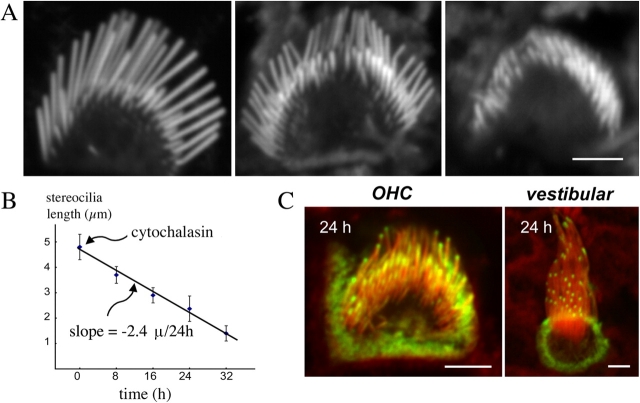Figure 3.
Effects of cytochalasin D on stereocilia. (A) Cytochalasin D shortens stereocilia as it blocks actin polymerization. Confocal images of phalloidin-stained stereocilia of representative hair cells after 1-μM cytochalasin D treatment of middle turn cochlear cultures (n = 10) indicate that stereocilia progressively decrease in length. All cells in the culture demonstrated stereocilia shortening over time without apparent change in the staircase pattern of the hair bundle. Bar, 2.5 μm. (B) The rate of stereocilia shortening is linear and matches the rate of actin polymerization. The lengths of the tall row of stereocilia were measured at 8-h intervals after 1 μM cytochalasin treatment, and the average values ± SD (n = 50) were plotted in the graph. The slope of the best-fit curve indicates an actin shortening rate of 2.4 μm/24 h. (C) Cytochalasin inhibits actin-GFP incorporation. Representative confocal images (n = 30 cells) of stereocilia from the apical turn of the organ of Corti (left) and vestibular (right) hair cells showing actin-GFP marks that have been incorporated for 8 h into the paracrystal. Actin-GFP marks remained at the tips and did not increase in length or progress down the stereocilia over the ensuing 16 h after the incubation with cytochalasin. Bars: (left) 2.4 μm; (right) 1.5 μm.

